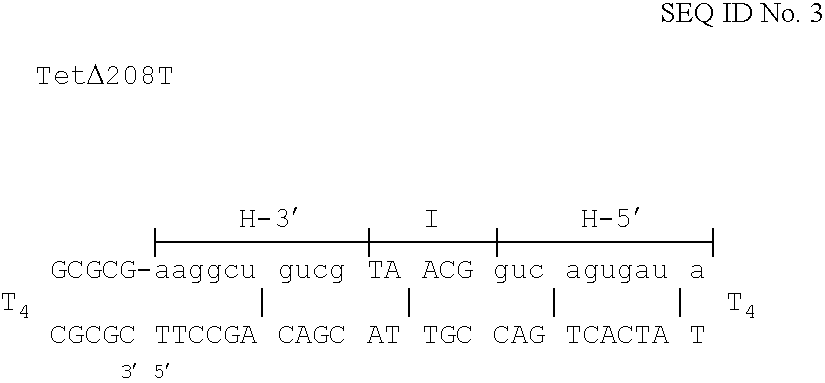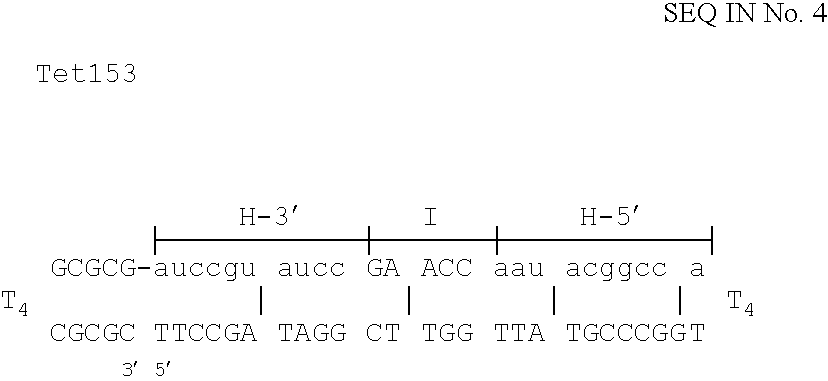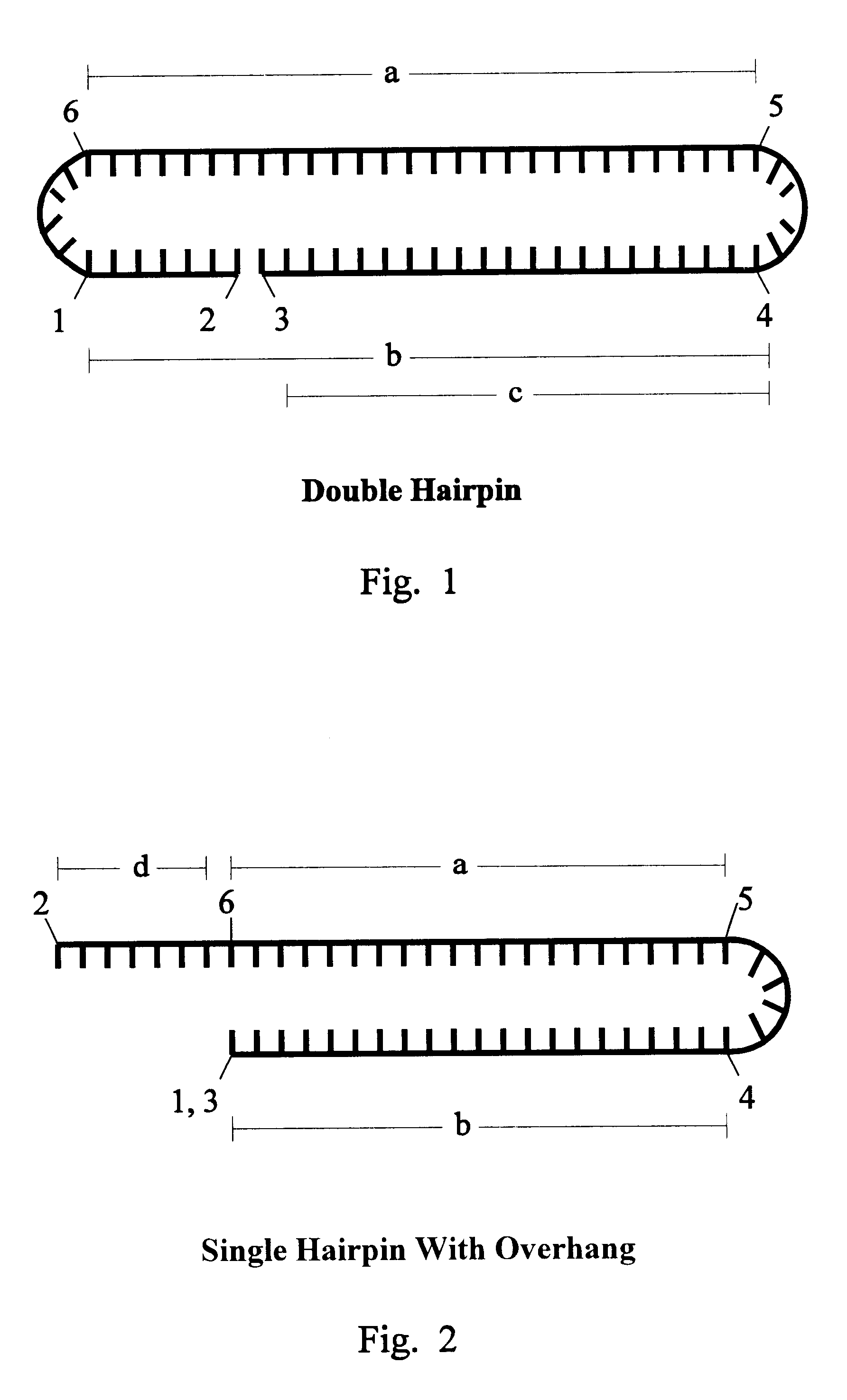Eukaryotic use of improved chimeric mutational vectors
a technology of chimeric mutation and vector, applied in the field of eukaryotic use of improved chimeric mutational vector, can solve the problems of cell defect repair genes, unacceptably high mutation rate, and cell leathality, and achieve the effect of genetic instability of cells with defective mismatch repair genes
- Summary
- Abstract
- Description
- Claims
- Application Information
AI Technical Summary
Problems solved by technology
Method used
Image
Examples
Embodiment Construction
Table I below shows the relative numbers of kanamycin and ampicillin resistant colonies using variants of Kany.y to correct a stop-codon causing CG transversion in the kan resistance gene.
The following materials and methods were employed to obtain these data.
Cell-Free Extracts: HuH-7 (Nakabayashi, H., et al., 1982, Cancer Res. 42, 3858) cells are grown in DMEM supplemented with 10% fetal bovine serum to mid log phase, about 5.times.10.sup.5 cells / ml. The cells are mechanically dislodged from the tissue culture flask and pelleted at 500.times.g. The pellet is washed in ice-cold Hypotonic Buffer with sucrose (20 mM HEPES, pH 7.5, 5 mM KCl, 1.5 mM MgCl.sub.2, 1 mM DTT, 250 mM sucrose), washed in ice-cold Hypotonic Buffer without sucrose and then resuspended in Hypotonic Buffer at 6.5.times.10.sup.7 cells / ml and incubated on ice for 15 min. Thereafter the cells are lysed using a Dounce homogenizer, 3-5 strokes, and thereafter incubated a further 45 min on ice. The lysate is cleared by c...
PUM
| Property | Measurement | Unit |
|---|---|---|
| pH | aaaaa | aaaaa |
| pH | aaaaa | aaaaa |
| volume | aaaaa | aaaaa |
Abstract
Description
Claims
Application Information
 Login to View More
Login to View More - R&D
- Intellectual Property
- Life Sciences
- Materials
- Tech Scout
- Unparalleled Data Quality
- Higher Quality Content
- 60% Fewer Hallucinations
Browse by: Latest US Patents, China's latest patents, Technical Efficacy Thesaurus, Application Domain, Technology Topic, Popular Technical Reports.
© 2025 PatSnap. All rights reserved.Legal|Privacy policy|Modern Slavery Act Transparency Statement|Sitemap|About US| Contact US: help@patsnap.com



